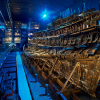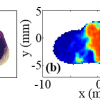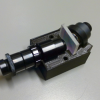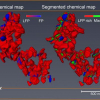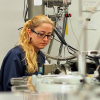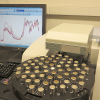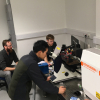Spectroscopy News
The Bruker MALDI Biotyper has received AOAC International approvals for two Official Methods of Analysis (OMA) in food microbiology; for pathogenic and non-pathogenic bacteria.
A combination of synchrotron techniques at the UK’s Diamond Light Source is being used to research the effect of conservation choices on corrosion of iron cannonballs from the Tudor warship, Mary Rose.
THz spectroscopy and imaging offer improved imaging of breast cancer tumours.
Researchers have used 3D printing to make the holder for the optics used to create an inexpensive and small hyperspectral imager.
A coherent, nanoscale beam of X-rays from a synchrotron source have been used to map chemical reactions happening inside lithium-ion batteries in three dimensions at the nanoscale.
Laser physicists at the Ludwig-Maximilians-University (LMU) and the Max-Planck-Institute of Quantum Optics (MPQ) in Munich, Germany, have developed an extremely powerful broadband infrared light source. This light source opens up a whole new range of opportunities in medicine, life science and material analysis.
Researchers are using hyperspectral sensors to detect fluctuations in photosynthesis over the growing season measured with sun-induced fluorescence.
Combining metasurface lenses with MEMS technology could add high-speed scanning and enhance focusing capability of optical systems.
Smart garments using embedded near infrared spectroscopy sensors are being developed at the University of British Columbia.
Many chemical processes run so fast that they are only roughly understood. To clarify these processes, a team from the Technical University of Munich (TUM) has now developed a pump-probe spectroscopy methodology with a resolution of quintillionths of a second. The new technology has the potential to help better understand processes like photosynthesis and develop faster computer chips.
Researchers at the Universities of Kyoto and Tokyo in Japan have developed a new method of light detection for NMR by up-converting radio-frequency signals into optical signals.
Infrared laser techniques have been used to study methane scattering on a nickel surface for the first time with full quantum-state resolution.
Starna has been accredited to the new Reference Material Producer (RMP) ISO 17034 standard has well as ISO 17034:2016.
XRF study shows that the plastic used in many second-hand toys could pose a risk to children’s health.
Spectro Analytical Instruments and Bernd Kraft GmbH are to cooperate over multielement standards.
The acquisition of Innovative Photonic Solutions will expand Metrohm’s handheld Raman portfolio.
Advion, Inc. has reached several major sales milestones for its Compact Mass Spectrometer.
Diffuse reflectance mid-infrared Fourier transform spectroscopy identifies key variations in Alaskan soils, quickly providing insights into carbon levels.
Raman, infrared, x-ray photoelectron and ultraviolet/visible spectroscopies are being used at the University of Liverpool to help develop better energy storage devices.
NIR hyperspectral imaging can be used to control the addition of seed treatment products to monitor dosage levels and coverage.

